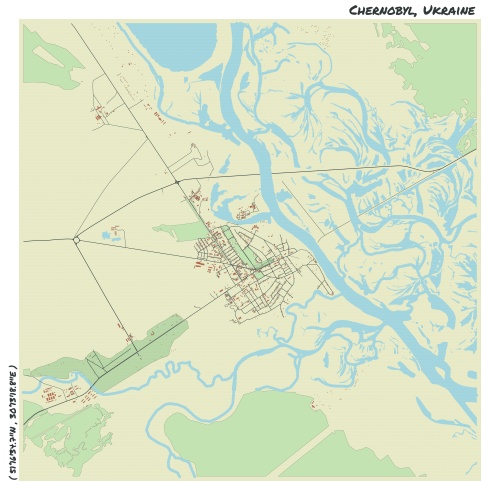Understand
In 1986, the Chernobyl Nuclear Station experienced a catastrophic meltdown, resulting in the release of dangerous radioactive chemicals into the air. This event contaminated millions of square miles across Europe and caused thousands of deaths. The closest town to the reactor, Pripyat, was forced to evacuate, leaving behind a ghost town frozen in time. Pripyat, once a thriving city of 49,000 people, is now a haunting reminder of the Soviet Union in 1986. Communist propaganda still adorns the walls, abandoned buildings are filled with personal belongings, and the streets are littered with remnants of a bygone era. The city's clock froze at 11:55, the moment the electricity was cut. Despite the devastation, nature has reclaimed the land. Wildlife populations have flourished, with deer, boar, wolves, and lynx returning to their natural habitat. Surprisingly, these animals have not shown signs of mutations, even with radiation levels thousands of times higher than normal. Today, Pripyat resembles a thriving national park rather than a radioactive zone. To explore Pripyat, Chernobyl, and the surrounding villages, visitors must obtain a pass from the government. Several well-known tour agencies offer guided tours, allowing visitors to witness the eerie beauty of the abandoned buildings. However, as time goes on, these structures are deteriorating, making it essential to book a comprehensive tour for a chance to explore the interiors of these buildings. While safety precautions are necessary, radiation levels on the tour are relatively low compared to lethal doses. Tourists undergo radiation screenings at the end of the visit to ensure their safety. As the years pass, these cities face the threat of being swallowed by the encroaching forest. It's a unique opportunity to witness the remnants of history before they disappear completely.
Map & Climate
Popular Foods
 Pelmeni - Pelmeni are Ukrainian dumplings filled with meat, usually pork or beef, and seasoned with onions and spices. They are boiled and served hot, often accompanied by sour cream or butter.
Pelmeni - Pelmeni are Ukrainian dumplings filled with meat, usually pork or beef, and seasoned with onions and spices. They are boiled and served hot, often accompanied by sour cream or butter. Borscht - Borscht is a traditional Ukrainian soup made with beets, which give it its deep magenta color. It typically contains potatoes, cabbage, carrots, and onions, along with chunks of meat like beef or pork. Sometimes, a vegetarian version with mushrooms or tofu can be found.
Borscht - Borscht is a traditional Ukrainian soup made with beets, which give it its deep magenta color. It typically contains potatoes, cabbage, carrots, and onions, along with chunks of meat like beef or pork. Sometimes, a vegetarian version with mushrooms or tofu can be found. Varenyky - Varenyky are a type of potato dumpling native to Ukraine. They are made using a mixture of mashed potatoes, flour, and eggs, then stuffed with ingredients like cheese, sauerkraut, or mushrooms. They can be boiled, fried, or baked and often served with sour cream, butter, or melted cheese.
Varenyky - Varenyky are a type of potato dumpling native to Ukraine. They are made using a mixture of mashed potatoes, flour, and eggs, then stuffed with ingredients like cheese, sauerkraut, or mushrooms. They can be boiled, fried, or baked and often served with sour cream, butter, or melted cheese.




Comments
NO COMMENTS